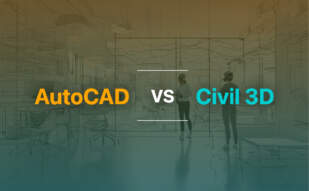
AutoCAD
Originally introduced as the world’s first PC-run CAD program at COMDEX trade show in Las Vegas in 1982, AutoCAD by Autodesk has since emerged as a leading computer-aided design software. It enables the production of precise 2D and 3D drawings, playing a pivotal role in industries, ranging from architecture and engineering to entertainment and fashion.
AutoCAD Top Features
- Idea Conceptualization: Facilitates innovation through design conceptualization and enhanced visualization.
- Technical Accuracy: The platform boasts robust features for producing designs with required technical accuracy.
- Customization and Automation: Integrated with Application Programming Interfaces (APIs), AutoCAD supports customization, automation, and addition of new features.
- Advanced Simulations: The automation of design calculations and simulations fast-tracks project lifecycle.
- Vertical Product Creation: AutoCAD supports the creation of vertical products like AutoCAD Architecture, AutoCAD Electrical, and AutoCAD Civil 3D.
| Feature | Description |
|---|---|
| File Compatibility | Supports a range of file formats, including those preferred by most 3D printers. |
| Drawing/Version History | Tracks and captures the evolution of design by storing different drawing versions. |
| Integration | Effortlessly integrates with other applications like 3D Max for seamless project execution. |
AutoCAD Limitations
- Users may need time to become comfortable with the software’s complexities and extensive features.
- While versatile, the software requires a high-performance computer system to operate efficiently.
AutoCAD Pricing
AutoCAD transitioned from selling perpetual licenses to a subscription pricing system effective from August 1, 2016.
AutoCAD Use Cases
Architecture
Architects widely utilize AutoCAD for intricate design visualizations and for creating blueprints – both 2D and 3D – ensuring meticulous planning and construction.
Engineering
Engineers across different fields – aerospace, automotive, etc., trust AutoCAD for its accuracy in simulations and calculations, significantly reducing potential errors.
Entertainment
Used in the recreation of virtual environments, character modeling, and 3D animation, AutoCAD enables the creation of high-quality content in the entertainment industry.
Blender
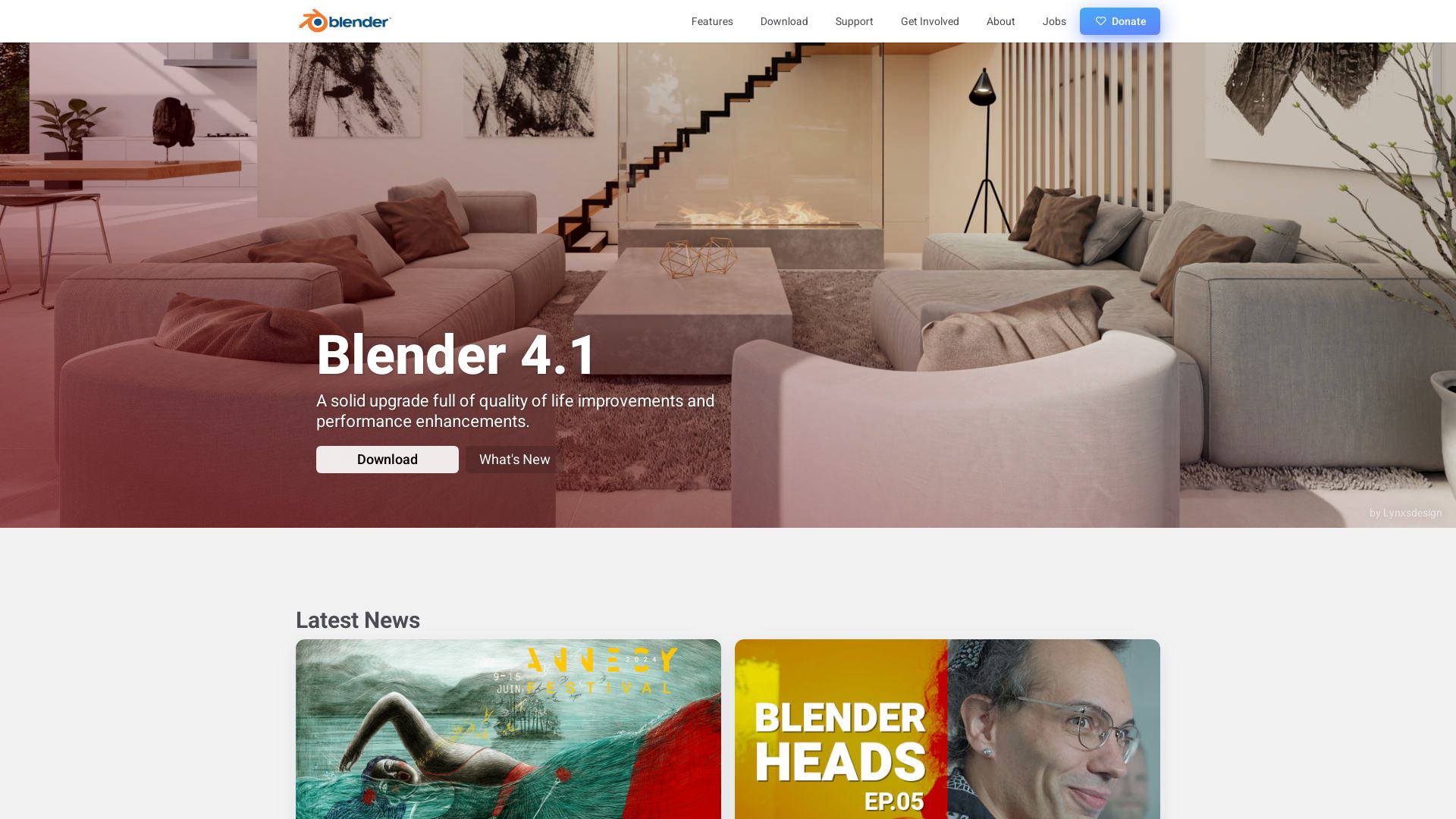
Meet Blender, your next 3D computer graphics software tool set. Stemming from Dutch roots, this rebellious software, developed by NeoGeo and spearheaded by Ton Roosendaal, has broken the constraints of proprietary coding, flying its free and open-source banner high since 2002. Think of it as a Swiss Army knife in 3D software, doing everything from animated films, visual effects, art, 3D-printed models, to virtual reality.
Blender’s Sterling Features
- 3D modelling: Craft your 3D creations with precision and control.
- UV mapping and texturing: The tools you need for effective texture mapping are right at your fingertips.
- Digital drawing and raster graphics editing: Your all in one solution for creating and editing high-quality images.
- Fluid and smoke simulation: Create lifelike fluid and smoke effects to make your scenes pop!
- Animation and match moving: The world of animation is at hand with Blender’s robust animation suite.
| Feature | Benefit |
|---|---|
| Rendering | Allows for the creation of photorealistic images with the Eevee renderer. |
| Video editing and compositing | Perfect for post-production, be it for films or promotional videos. |
| Portability and Versatility | Compatible with Linux, macOS, Windows, BSD, and Haiku, and supports multiple 3D file formats. |
Blender’s Shortcomings
- Depreciation of the Blender Game Engine might be a setback for some developers.
- The removal of the Blender Internal in favour of the Eevee renderer might be a steep learning curve for some users.
Blender Pricing
Did we mention it’s free? Yes, you heard it right. Blender steps up the game by being open-source and free to use. Rock on, software freedom!
Blender Use Cases
Use Case 1: Animation Studios
From small indie studios to film production giants, everybody can benefit from the array of features Blender offers for creating stunning animations.
Use Case 2: Game Developers
Despite depriving of its own game engine, Blender remains a vital tool for making 3D models for games due to its advanced modeling and texturing features.
Use Case 3: Freelance Digital Artists
Blender provides everything from sculpting to premium final render, empowering freelance digital artists to deliver professional-quality work with zero software costs.
Unity

An innovative powerhouse in the realm of game development, Unity caters to both 3D and 2D game creation. Launching in 2005, it has consistently proven its robust and capable nature, becoming a staple in the creation of complex games for various platforms and operating systems.
Unity Top Features
- Cross-platform compatibility: Unity’s framework is incredibly adaptable, enabling developers to launch games across Android, iOS, and several other operating systems.
- Augmented Reality to 3D simulations: Its diverse capabilities extend beyond traditional game development, opening up avenues for Augmented Reality applications and 3D simulations.
- Comprehensive suite of tools: With its helpful rendering technology and a full suite of complex tools, Unity fuels high-quality game creation.
- Asset Store: Unity boasts a rich asset store replete with pre-designed textures and features, igniting creativity, and expanding game design possibilities.
- Varied coding languages: It provides support for a variety of coding languages including BOO script, Javascript, C#, thereby catering to broad developer preferences.
| Feature | Description |
|---|---|
| Active developer community | Access to a vibrant community of developers for assistance, problem-solving, and system improvement feedback. |
| Continuous tech evolution | Unity is committed to enhancing user experiences, continually unveiling tech improvements to boost compatibility and immersive visuals. |
| Industry learning facilitation | Unity engages its user base in constant industry solution learning, promoting communication and problem-solving, thereby strengthening game development. |
Unity Limitations
- Pricing structure: The new pricing model coming into effect on January 1, 2024 could potentially harm solo, indie, mobile developers.
- Fear of per-install fees: Developers worry about being unfairly charged for repeated downloads by a single user.
- Lack of transparency: Unannounced changes to the pricing model created a trust deficit between Unity and its users.
- Retroactive fees: Fear over new retroactive fees has strained the relationship between Unity and its developer community.
Unity Pricing
A revised pricing structure will replace the erstwhile Unity Plus subscription with a model where developers are charged a fee with each installation post-January 1, 2024. However, no installation fee applies until a game exceeds $200,000 in revenue and surpasses 200,000 installations. The actual fee varies with the market – standard markets like the US and UK bear a higher fee than emerging markets like India and China.
Unity Use Cases
Use Case 1: Augmented Reality Applications
Unity’s adaptability translates well into the creation of Augmented Reality experiences. Combining the available suite of tools and robust asset store, developers can build interactive and immersive AR applications.
Use Case 2: Indie Game Development
The diverse coding languages support and comprehensive toolsets allow indie game developers to bring their creative visions to life, even on smaller scales.
Use Case 3: 3D Simulations
Unity serves as a powerful tool for developers aiming at creating 3D simulations. By leveraging Unity’s rendering technology, developers can engineer realistic and robust simulation environments.
Unreal Engine
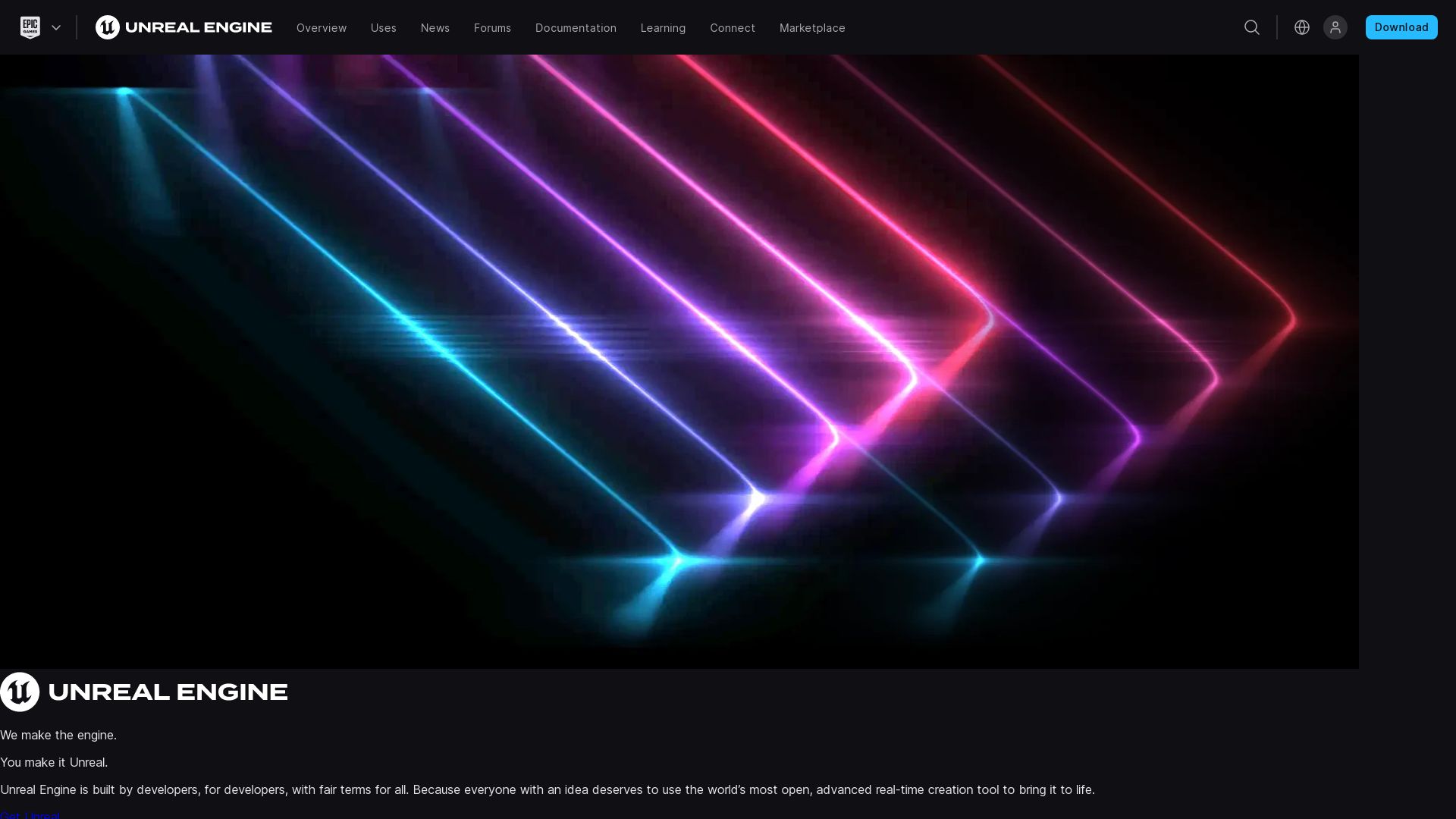
When we talk about gamechanging 3D graphics software, we can’t sidestep Unreal Engine (UE). This game engine, developed by Epic Games, has been making waves since 1998. Initially a playground for PC first-person shooters, UE took a leap out of its comfort zone, supporting a myriad of platforms over time. So, whether you’re a desktop junkie, a mobile enthusiast, or a virtual reality guru, this engine has you covered.
Unreal Engine Top Features
- Supports a comprehensive range of platforms from desktop to virtual reality
- Incorporates UnrealEd, a level editor, for real-time constructive solid geometry
- Epic Games Store allows you to skip royalty fees
- Generous revenue share for content creators (88%)
- Unreal Engine Marketplace offers an outlet for buying and selling creations
| Feature | Description |
|---|---|
| Unreal Development Kit (UDK) | Free version of UE3’s SDK, supporting iOS games and apps development. |
| Quixel | Advanced features acquired from other companies like Quixel. |
| Universal Compatibility | Whether you’re using UE5 or UE4, compatibility isn’t an issue as they cater to a variety of game genres and industries, including film and television. |
Unreal Engine Downsides
- Epic charges 5% royalty for revenues over USD 1 million
- Without explicit support, UE3 could be a bit complex for modders
Unreal Engine Pricing
Unreal Engine adopts a graduated royalty model. For products generating revenues below USD 1 million, there’s no need to part with your precious profits. It’s completely free! However, if your project rakes in more than a million greenbacks, get ready to remit a 5% royalty to Epic Games. More specifically, the fee applies to products earning over $3,000 in a quarter.
Unreal Engine Use Cases
Use Case 1: Game Development
Given UE’s roots in first-person shooter games, it has nurtured an unreal prowess for gamers and developers alike. With features like UDK, supporting iOS games, it’s the perfect tool for both beginners and veteran game creators.
Use Case 2: Film and Television
UE is not a one-trick pony! Its support extends beyond the gaming field into film and television. If you’re in the movie industry and looking to sprinkle digital magic on your production, trust UE to assist you.
Use Case 3: Education
Are you an educational institution aiming to integrate technology into your learning environment? Guess what? Unreal Engine comes with an irresistible offer – it’s absolutely free for schools and universities.
Rhino

Meet Rhino, a popular 3D modeling software, also known as Rhinoceros 3D, favored in the fields of architecture, prototyping, engineering, and design.
Rhino Top Features
- NURBS geometry: Rhino creates precise surface models based on Non-Uniform Rational Basis Splines (NURBS) geometry.
- Rhino.Inside.Revit: This tool allows bridging between Rhino, Grasshopper, and the Autodesk Revit environment.
- Add-ons and algorithms: Introduced in Rhino 7, these features tackle various modeling challenges.
- SubD tools: For fast creation of organic shapes.
- Scripting languages support: Rhino supports two scripting languages, Rhinoscript (based on VBScript) and Python.
- File format compatibility: Over 30 CAD file formats are compatible with Rhino for importing and exporting. Rhino’s file format (.3DM) can be exchanged with other programs’ file formats via openNURBS Initiative toolkit.
| Software Origin | Developed by Robert McNeel & Associates, based in Barcelona. |
| Primary Function | As a freeform surface modeler, function takes precedence with the NURBS mathematical model. |
| Additional functionality | Models, 2D drawings, and visuals can all be created and controlled in a single Rhino document. Complete freedom in modelling without sacrificing precision. |
Rhino Limitations
- Although immensely precise, Rhino is not 3D printing-specific and often requires pre-printing optimization.
- Originally developed as a complementary tool to Autodesk’s AutoCAD software, it can sometimes act more as a conversion tool, meaning users may face compatibility barriers between software packages.
Rhino Pricing
Rhino 7 is priced at €995. Upgrades for previous version holders cost €595. A discounted rate for students and teachers is available at €195, with upgrades for these users costing just €95.
Rhino Use Cases
Architecture
With its high-level 3D geometries and complex surface creation abilities, Rhino is a robust tool for architects to create intricate designs.
3D Printing and Prototyping
Rhino’s NURBS capabilities ensure mathematical precision, making it ideal for rapid prototyping and 3D printing processes that require tight tolerances.
Graphic and Industrial Design
The limitless freedom Rhino grants to modellers, along with its incredibly precise controls, makes it perfectly suited for detailed and complex graphic and industrial design projects.
Lumion
A premier choice for 3D Graphics & Modeling, Lumion is an impressive solution, transforming CAD designs into premium renders. An on-premise application celebrated by architects, designers, and esteemed by design studios like SAOTA and TEN OVER STUDIO.
Lumion Top Features
- Built-in content library boasts a range of light fixtures, buildings, furniture, trees, and roads.
- Supports multiple file types like BMP, JPEG, OBJ, FBX, MP4, and seamlessly integrates with popular platforms such as AutoCAD, Revit, ArchiCAD, SketchUp.
- Real-time rendering and interactivity, letting you create and display 3D images instantly.
- Comprehensive object and material library allowing you to choose from various styles and effects.
- Hand-drawn outline effects, atmospheric rain and snow, easy setting of models and textures, customizable 3D landscapes all contribute to Lumion’s comprehensive feature set.
| Features | Details |
|---|---|
| Model/material variation & Paint placement | Enable unique customization for a more personalized design outcome. |
| Real-Time Rendering & Flexible Usage | Outstanding capacity for interactive presentations and exploring virtual worlds. |
| Light and Shadows Effects | Amp up realism in renders, add depth and dimension to designs. |
Lumion Limitations
- Although offering an abundant range of features, Lumion’s pricing can be steep, starting at $1,850.00 for a one-time payment. It might be a deterrent for start-ups.
- Achieving the best results with Lumion necessitates a robust computer setup, which could prove challenging for some users.
- While Lumion excels in urban design and planning, it may not be the most suitable for VR gaming or animation — areas where Autodesk’s 3DS Max shines.
Lumion Pricing
Lumion’s pricing model starts from a one-time payment of $1,850.00. They also provide subscription options and promise a yearly release strategy and frequent software updates.
Lumion Use Cases
Use case 1
For architectural rendering, Lumion’s ease of use, lightweight properties and cost-effectiveness make it a preferred choice over 3DS Max.
Use Case 2
In the world of urban planning and design, Lumion’s specialized features support creating realistic, detailed visualizations.
Use Case 3
For AEC professionals, Lumion offers efficient rendering and works seamlessly with popular CAD platforms such as SketchUp, BricsCAD, ArchiCAD, AutoCAD to transform CAD designs into compelling images and videos.
SketchUp
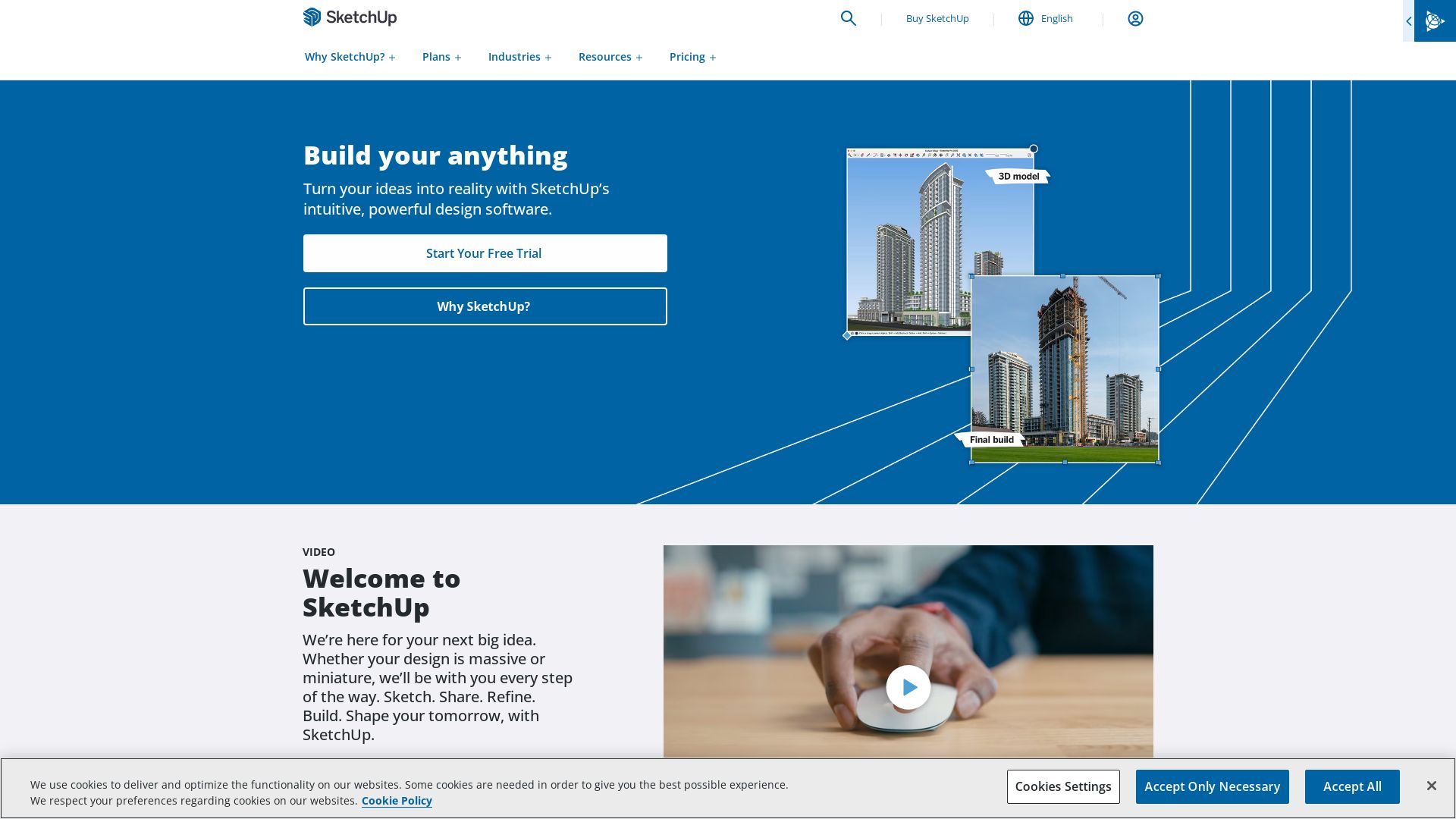
Developed by Trimble Inc., SketchUp is an intuitive 3D modeling computer-aided design (CAD) program widely used in diverse fields such as architecture, interior design, and product design, to name a few. Originated from startup company @Last Software in 2000, SketchUp was later acquired by Google and then by Trimble Inc.
SketchUp Top Features
- Smart Drawing Tools: Helpful for architectural design to interior modeling and product visualization.
- 3D Warehouse: A vast repository where SketchUp users can upload, download, and share 3D models.
- Extensions: Provides additional functionality through third-party additions available in the Trimble Extension Warehouse.
- Real-time Collaboration: Enables seamless group work on projects.
| Rendering: | Capable of creating breathtakingly realistic images when combined with V-Ray. |
| Global Illumination: | Enhances the overall scene lighting using the Chaos Enscape feature. |
| Wide File Format Support: | Supports a range of file formats including .3DS, .DAE, .DEM, and .DDF, among others. |
SketchUp Downsides
- Lack of support for extensions in the free web-based version, limiting functionality.
- Transition to a subscription-based model that may not be favorable for all users.
SketchUp Pricing
SketchUp straddles a range of price points to meet diverse needs, offering a free web-based app and three paid subscriptions: SketchUp Shop, SketchUp Pro, and SketchUp Studio.
SketchUp Use Cases
Use case 1 – Architecture
With its precision and ease of use, SketchUp is widely adopted in the architecture sector. The platform’s Smart Drawing Tools coupled with an extensive 3D Warehouse make it perfect for architectural design.
Use case 2 – Interior Design
The availability of different styles and surface rendering options make SketchUp a go-to tool for interior designers. The software’s real-time collaboration feature also proves valuable for group projects.
Use case 3 – Industrial and Product Design
SketchUp’s compatibility with V-Ray for photorealistic renders and its ample plugin options make it a potent tool for product and industrial designers, enhancing both practicality and creativity.
3ds Max
Descending from the trailblazing Autodesk family, 3ds Max has made significant strides in the sphere of 3D modeling and animation. It has found home not just within the video game development arena but also in pre-rendered productions such as architectural presentations and full-feature films.
3ds Max Top Features
- Modeling Capabilities: Has powerful polygon modelling tools, and also supports Non-Uniform Rational Based-Splines (NURBS) for creating smooth spheres.
- Flexible Plugin architecture: Offers an array of specialized plugins available for separate purchase to augment your software capabilities.
- Animation Tools: Boasts an all-encompassing set of animation tools including expressions, scripts, list controllers, and wiring.
- MAXScript: A built-in scripting language that enhances automation and workflow customization.
- Scene Explorer: Gives a hierarchical view of scene data, aiding in organization and navigation of complex scenes.
| Function | Description |
|---|---|
| 3ds Max Cloth | Integrated cloth solver for creating realistic cloth simulations. |
| Token System | Facilitates usage on a pay-as-you-go basis, perfect for projects with fluctuating requirements. |
| Autodesk Vault | Consolidated hub for managing all 3ds Max assets, fostering better resource management and control. |
3ds Max Limitations
- Being a professional-grade software, 3ds Max might come with a steep learning curve for beginners.
- As of now, 3ds Max only operates on Windows, making it less versatile for users of other operating systems.
3ds Max Use Cases
Video Game Development
3ds Max’s versatility and robust toolkit make it an invaluable asset for game designers crafting intricate 3D worlds and characters.
Film Production
From special effects to computer-generated imagery (CGI), 3ds Max is a reliable ally for filmmakers pushing the envelope for visual storytelling.
Architectural Visualization
Architects and designers can leverage 3ds Max’s realistic rendering capabilities to create lifelike 3D walkthroughs and simulations of building designs, facilitating more effective presentations and pitches.
Autodesk
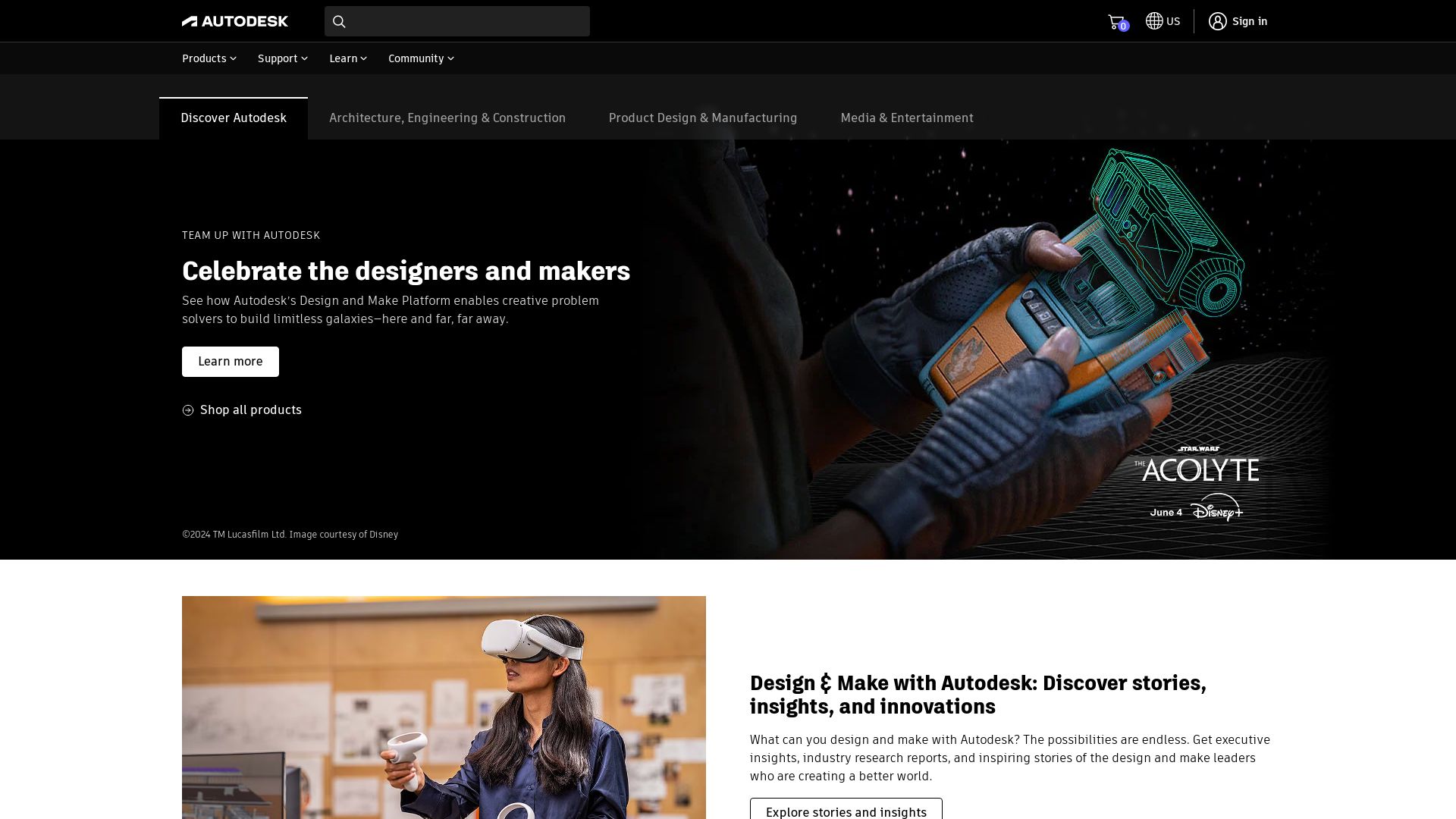
Autodesk, Inc. was established in 1982 and is an eminent multinational corporation that develops software products for diverse sectors including engineering, architecture, manufacturing, media, and more. Headquartered in San Francisco, California, it has offices in various locations in the U.S. and Canada.
Autodesk Top Features
- AutoCAD: This flagship software is highly used in architecture and engineering for designing buildings and electric vehicles like Tesla.
- Digital Prototyping: Autodesk Inventor, Fusion 360, and Autodesk Product Design Suite grant users the ability to visualize and simulate real-world conditions.
- Diverse Software: Autodesk offers varied software programs such as Revit, game development, and design visualization tools like 3ds Max & Maya.
| Software | Use |
|---|---|
| AutoCAD | For architecture, engineering, and structural design. |
| Revit | Building information modeling. |
| 3ds Max & Maya | For design visualization. |
Autodesk Limitations
- Discontinued Support: Post-AutoCAD Release 13, Ongoing support for Unix environment, Apple Macintosh was stopped.
- Workforce Reduction: In between 2017-2019, the company underwent major layoffs, reducing its workforce from 9,200 to 7,200.
- Discontinued Products: Products like Volo View, 3D Studio Max, Lightscape, and Sketchbook designer are no longer available.
Autodesk Use Cases
Use case 1
AutoCAD from Autodesk has been extensively used in the architecture domain to design complex structures like the NASA Ames building, San Francisco Bay Bridge, Shanghai Tower, and New York’s One World Trade Center.
Use case 2
The visualization and simulation abilities of Autodesk software like Fusion 360 and Autodesk Product Design Suite prove to be influential for manufacturers and engineers in visualizing the performance of their designs in real-world conditions.
Use case 3
For the animation and gaming industry, 3ds Max & Maya have empowered artists with tools for 3D modeling, rendering, and animation, creating stunning visual effects.
AutoCAD LT
A streamlined variant of the renowned CAD software, AutoCAD LT is popular for its simplicity, cost-effectiveness, and impeccable 2D drafting tools. Released by Autodesk, this software lacks the 3D capabilities found in its parent application but shines in other areas.
AutoCAD LT Top Features
- 2D Drafting Tools: Detailed and precise tools for 2D drafting and documentation.
- Interface customization: Personalize your workspace to improve efficiency and ease of use.
- Compatible with Windows and MAC: Works seamlessly on both platforms, prioritizing user convenience.
| Feature | Description |
|---|---|
| File Support | Accepts numerous file formats like DWG, DXF, PDF, and more. Ideal for versatile design needs. |
| Collaborative Tools | While limited compared to AutoCAD, AutoCAD LT can cater to small teams and infrequent users. |
| Autodesk’s Cloud Integration | Offers version control, although with limited collaboration features. |
AutoCAD LT Limitations
- No 3D Capabilities.
- Limited collaboration features might become a bottleneck for larger teams.
- No support for automation and specialized tool development, which limits scalability.
AutoCAD LT Pricing
Priced at $60 for a monthly subscription, AutoCAD LT offers a budget-friendly alternative to AutoCAD, which is priced at $235 per month. Autodesk also provides an even more cost-effective Flex program. For $3 per token, users can access the software for a 24-hour period.
AutoCAD LT Use Cases
Use case 1
AutoCAD LT excels at design detailing and drafting. Architects, constructers, and engineers can create precise and accurate 2D blueprints and schematics of buildings, machines, and other structures.
Use case 2
For individuals and small teams, AutoCAD LT’s collaboration features come in handy. The version control provided by Autodesk’s cloud integration ensures smooth workflow.
Use case 3
AutoCAD LT is a great learning tool for individuals aiming to make a career in design or architecture. Autodesk even offers a 30-day free trial for newcomers to gain hands-on experience with the software.
Civil 3D
Meet Civil 3D, an Autodesk product finely crafted for civil infrastructure design and documentation. Widespread in creating and editing drawings of roads, highways, bridges, railroads, and canals, this tool is a true testament to advanced calculations and data capture technology.
Civil 3D Top Features
- User-friendly design built for efficiency and effectiveness in topography and infrastructure projects
- Compatibility with ESRI ArcMap 10 and Civil Design
- Supports 2D and 3D computer-aided design (CAD)
- Collaboration enhancement across project teams with multiuser capabilities
- Integration access for third-party applications and customized solutions
| Feature | Description |
|---|---|
| File Compatibility | Native file support for .dwg, .dwt, .dws with sharing capability through .dxf format |
| Engineering Model | Dynamic design links to production drawing providing time and cost savings |
| Construction Rendering | Realistic 3D construction limitations, complete with volumetric updates |
Civil 3D Disadvantages
- High pricing model impacting small designers
- Needs for more suitable plans for users with lesser projects
- Limited feature set on Mobile and Web versions
Civil 3D Pricing
While Civil 3D provides extensive tools for civil engineering modeling, be prepared for a higher price tag. This can create a barrier for smaller design outfits, making them wish for more accessible packages for limited projects.
Civil 3D Use Cases
Use case 1:
Civil 3D is a popular choice for city planners, enabling efficient design and documentation of complex urban infrastructure projects. The program’s user-friendly interface and multi-user capabilities boost productivity and collaboration.
Use case 2:
The advanced features of Civil 3D are perfect for architects tackling large-scale designs. Designs can be comfortably synchronized with drafting, giving architects a comprehensive view and refined control over projects.
Use case 3:
For project managers and engineers, Civil 3D offers a competitive edge with its potent integration of design, drawing, and data collection capabilities. Consequently, it empowers professionals to explore various design alternatives while ensuring time and cost economies.
ArchiCAD

Envision an architectural symphony in the language of Augmented Reality; that’s the prowess of ArchiCAD. Developed by the industry pioneers at Graphisoft, this wizardry tool offers a seamless blend of aesthetic and engineering mastery in design for the built environment.
ArchiCAD Top Features
- 2D and 3D drafting: Give form to your architectural fantasies with precision.
- BIM functionality: Fuel architectural innovation with this first commercial BIM product for personal computers.
- Remote collaboration: This first-in-class tool enables effective project coordination, regardless of distance.
| File Exchange Solution | A boon for collaborative projects, this was introduced in Version 5.1 (1997) and later upgraded to Graphisoft BIM Server in 2009. |
| API Support | A versatile platform providing direct API links to 4D, 5D software and ODBC database connections for third-party integration. |
ArchiCAD Disadvantages
- Limited access for trial: Though a free trial exists, it restricts access to the robust functionalities, limiting the experience.
- Pricing structure: The cost can vary based on licensing and existing ArchiCAD versions, making it unpredictable.
ArchiCAD Pricing
Pricing is a chameleon, with variations based in part on licensing, existing ArchiCAD versions, and plan selection. However, to truly grasp the potential of ArchiCAD, a 30-day fully functional trial version is available.
ArchiCAD Use Cases
Use Case 1 – Architects
With its precise 2D and 3D drafting abilities, ArchiCAD brings an architect’s vision to life.
Use Case 2 – Designers
ArchiCAD’s aesthetic prowess is a boon for designers who wish to enrich their design process.
Use Case 3 – Project Coordinators
ArchiCAD shines in enabling remote worldwide project collaboration and coordination, a potent tool for project coordinators.
CAD
CAD (Computer-Aided Design), a term first coined by Douglas T. Ross in 1959, is software used for 2D and 3D design creation. Primarily utilized in the automotive and aerospace sectors, it has dramatically transformed the world of digital manufacturing.
CAD Top Features
- 3D modelling capabilities: Updated in 1985 to incorporate 3D modelling, enhancing the design process and its visualization.
- CAD/CAM integration: CAD designs can be directly used for automated machine tools, streamlining the manufacturing process.
- Backward compatibility: CAD software is future-proof and constantly updated with industry developments.
| Feature | Description |
|---|---|
| PRONTO | First commercial, numerical-control programming system, sparking the inception of CAD/CAM. |
| HoloLens support | Microsoft’s HoloLens allows holographic model display, marking a major CAD milestone. |
CAD Disadvantages
- Complex interface: May require a learning curve for beginners or non-technical users.
- Heavy software: Might need robust hardware specifications to run smoothly.
- Cost: Professional-grade CAD software can be expensive.
CAD Use Cases
Use case 1 – Aerospace
In the aerospace industry, CAD aids in intricate design creation, helping reduce design production costs and improving productivity. Moreover, CAD/CAM integration facilitates automated machining, further streamlining operations.
Use case 2 – Fashion Design
For fashion designers, CAD allows the creation of 2D and 3D designs, provides flexibility for design alterations, and enhances design communication within a team.
Use case 3 – Animation and Game Design
CAD is extensively used by animation illustrators and game designers, offering 3D modelling capabilities, facilitating better visualization and enhancing design quality.
AutoCAD Architecture
AutoCAD Architecture is premium architectural design software, specially created for architects, engineers, and construction professionals. It can be downloaded from the AutoDesk website and installed on Windows, Mac devices. More than a simple design and drafting software, AutoCAD Architecture boasts a range of advanced functionality, including architectural renovations, custom elements and collaboration tools.
AutoCAD Architecture Top Features
- Complex 3D modeling capabilities
- Over 8,500 intelligent architectural component designs
- DBMS (DWG Compare, Save-to-Web, Mobile, 2D Graphic, Shared Views, AutoCAD Web App)
- Sustainability-focused design features
- Highly customizable architecture packages
| Feature | Benefit |
| Display System | Automatic updates to match display requirements |
| AutoCAD Mobile App | View, create, and edit DWG files on the go |
| Collaboration Tools | Facilitate professional teamwork |
AutoCAD Architecture Limitations
- Steep learning curve for new users
- Relatively high price point can be a barrier to adoption
- Potential technical issues or bugs
- Can be resource-intensive when working with large building models
AutoCAD Architecture Pricing
AutoCAD Architecture offers an AutoCAD subscription for $220 monthly, $1,775 yearly, or $4,795 every 3 years.
AutoCAD Architecture Use Cases
Use Case 1 – Architects
Architects can use AutoCAD Architecture to plan and visualize detailed building models, making it a powerful tool in both the early stages of design and the creation of final construction documents.
Use Case 2 – Construction Professionals
Construction professionals find AutoCAD Architecture invaluable for its array of intelligent architectural components and its functionality for managing changes throughout the design process.
Use Case 3 – Engineers
Engineers utilize the intricate 3D modeling capabilities of AutoCAD Architecture to create and adjust complex building designs, benefiting greatly from the software’s precise dimensions and advanced tools.
Fusion 360
Developed by Autodesk, Fusion 360 is a cloud-based collaboration platform that brings together CAD, CAM, CAE, and PCB design within one platform. Introduced in 2013, this versatile software provides excellent platform compatibility across Windows, macOS, web browsers, Android, and iOS.
Fusion 360 Top Features
- CAD, CAM, CAE, PCB integrated platform
- Advanced 2D & 3D designing and PCB layouts.
- Cloud-based collaborative platform.
- Affordable subscription plans.
| Feature | Description |
|---|---|
| Realistic Rendering | Fusion 360 offers an advantage with its ability to render designs realistically. |
| Simulation Capabilities | It creates an immersive design experience with its robust simulation capabilities. |
| Cloud Integration | Its cloud integration realizes a streamlined workflow. |
Fusion 360 Limitations
- Potential malware risks due to browser-based design.
- Limited personal keyboard controls customization.
- No standalone web-based version available.
Fusion 360 Pricing
Fusion 360 is priced competitively, with a free limited version available for home use. For commercial use, an annual subscription is offered at $545/year, or a more flexible plan at $70/month.
Fusion 360 Use Cases
Use case 1: Electronics
Fusion 360 offers brilliant features like integrated electronics for MCAD and ECAD co-designing which makes it useful for electronics based designing.
Use case 2: Aesthetic Design
The platform’s versatile 2D and 3D design capabilities & realistic rendering make it an ideal tool for aesthetic design applications.
Use case 3: Architecture
For architecture, Fusion 360 provides a powerful combination of design, simulation, and visualization tools to bring designs to life.
Grant Sullivan
Content writer @ Aircada and self proclaimed board game strategist by day, AI developer by night.



